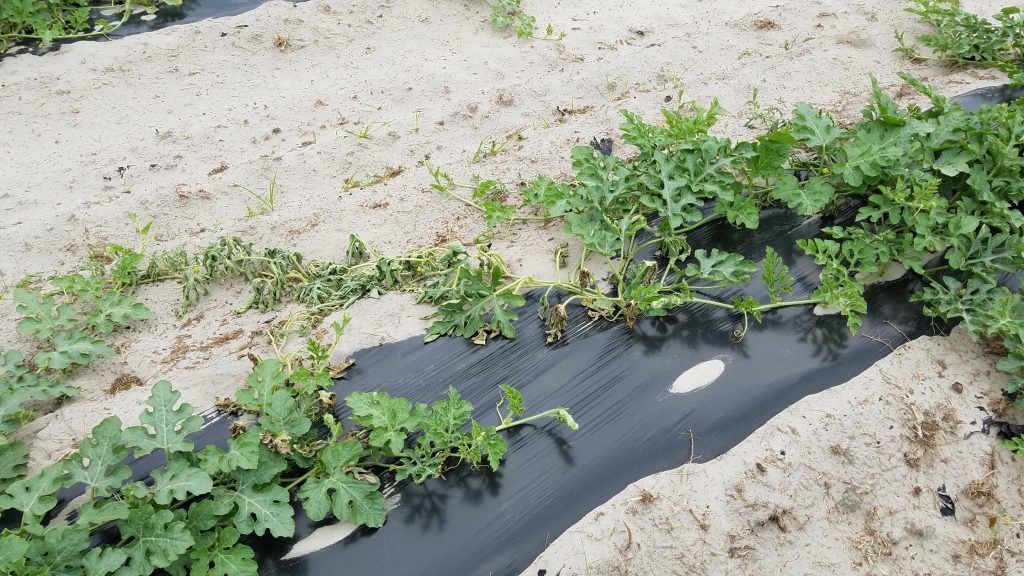
By Nicholas S. Dufault
It has been more than 120 years since an unknown watermelon wilt disease was observed to cause heavy losses in the southern United States. The re-emergence of this disease, identified as fusarium wilt (FW) caused by the fungus Fusarium oxysporum f. sp. niveum (Fon), has led to a need for alternative control practices.
MANAGEMENT STRATEGIES
Numerous FW disease management strategies have been developed such as fumigation, long-term (>7 years) crop rotation, delayed planting, grafting and host resistance. This article will briefly discuss the pros and cons of current management techniques and explain how improved diagnostics with a better understanding of risk is important for future management of FW.
The techniques listed above can all be effective at managing FW. However, inconsistent results related to fumigation as well as delayed planting in Florida have led to a need to further investigate when and how to implement these management options. Grafting and cultivar resistance both provide effective control of Fon, but cost or mixed pathogen populations can impact their usefulness, respectively.
For example, the deployment of a resistant cultivar, even if it is not specific to all the races in the field, can result in less wilting than cultivars without resistance. The effectiveness of this technique is increased when the predominant pathogen present is the same race as the resistance trait. Unfortunately, there are times when the Fon population present in the field is not affected by resistance, which leads to significant wilting and losses.
NEW TOOLS AND MORE KNOWLEDGE NEEDED
Thus, deployment of new resistance sources is needed in combination with more accurate pathogen diagnosis techniques. Integrating these techniques, as well as others, will likely provide more consistent results for disease management. Finding the optimum integrated technique will require more information about the pathogen and disease risk.
To improve risk assessment for FW, a bioassay is being assessed that can help detect the pathogen in the field after a long rotation. In addition, a climate/risk index tool is being developed to determine FW risk. These tools can provide further insights into the risk associated with FW but should only be considered as decision support aides and not prediction tools. The effectiveness of these tools will be improved by better documenting the Fon genotype present within a given field.
Research currently being conducted across the Southeast is focused on expanding the understanding of the pathogen’s genetics. This genetic information can also be used to improve the understanding of the FON races and maybe even provide insights into what makes the pathogen virulent. As further information is gained about the pathogen’s genetics, it can be combined with breeding programs to focus on these virulence traits and used to improve disease diagnostic methods in the field and on the seed.
Substantial progress has been made on understanding FW management. Unfortunately, no single method has proven to be completely effective or economically feasible for disease control. Improved knowledge about the pathogen’s genetics will be critical to implementing proper integrated management techniques as well as accurately assessing disease risk related to field history, climate and diagnostics.









